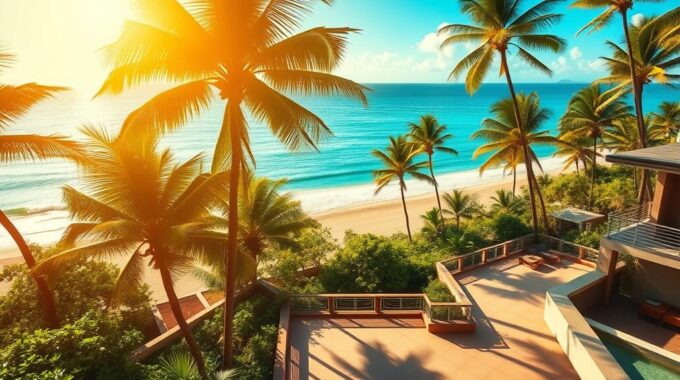Discover how to access significant funds with a Home Equity Loan Costa Rica. We offer competitive rates, flexible terms, and lower fees. Simplify your financing process today.
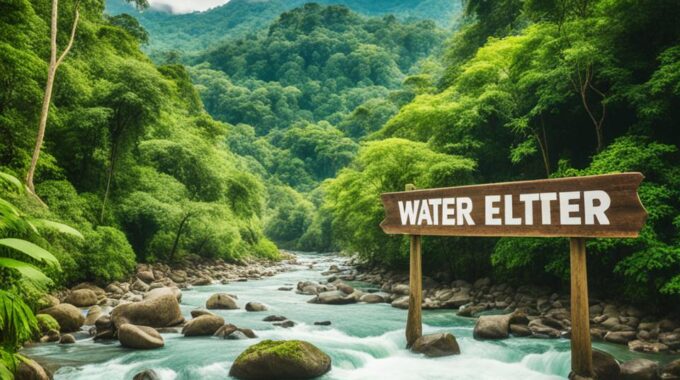
Everything You Need to Know About Water Letters In Costa Rica
Planning to build a property in Costa Rica? Then, you’ve certainly heard of needing a “water letter” or “carta de agua.” But what is this letter, and why do you need it for your construction? We’re here to explain it all. This guide will cover the basics of water letters in Costa Rica. You’ll learn about their legal importance, who issues them, and the steps to getting yours.
In Costa Rica, “cartas de agua” are crucial. They prove that your property has enough drinkable water. For any building permit, these letters are a must-have. Just having water on your site isn’t enough. You need official approval first.
So, why are these water letters such a big deal for your property work?
Key Takeaways
- Water letters are essential for getting building permits in Costa Rica.
- They’re given out by AyA (Costa Rican Institute of Aqueducts and Sewerage) or local ASADA water groups.
- Usually, water letters are good for 6 to 12 months.
- Gated communities need water letters, even if they have their own water.
- It’s possible to use other water sources like springs, streams, or wells, but it’s more complex.
Understanding the Importance of Water Letters
In the Costa Rican real estate world, the water letter stands out. These costa rican water letters are key legal papers. They’re vital for the building permit process.
Legal Requirement for Building Permits
To get a building permit in Costa Rica, you need a water letter. It confirms you have clean water for your property. Without it, surf report costa rica fans can’t build their homes.
Protecting Your Property Investment
Water letters are important beyond legal needs. They give details on wave modeling costa rica and more. This info helps protect your costa rica water usage investment and land sustainability. With it, you can understand water rights and make safer choices.
What is a Water Letter?
In Costa Rica, a water letter is key. It’s known locally as a “carta de agua.” This document proves that a property has clean water available. It must be had to get a building permit. The aim is to guarantee needed water for building safely.
Definition and Purpose
A water letter tells about a property’s water and sewage. It notes where the water and sewer lines are. Getting it protects a homeowner’s investment. It also helps plumbers work on issues more easily.
Authorities Issuing Water Letters
Costa Rican AyA (Instituto Costarricense de Acueductos y Alcantarillados) or local ASADA groups give water letters. They look after water systems to ensure clean water for properties.
The process of getting a water letter is quite simple in Costa Rica. It usually requires an online form. But, remember that this document has an expiry. So, keep it up to date, especially if you’re selling a property.
| Water Letter Requirement | Description |
|---|---|
| Legal Necessity | Building permits in Costa Rica need a water letter. Without it, you may face trouble starting construction. |
| Water Source Options | If you lack a water letter, you might explore using natural sources or digging a well. But these options can be complex. |
| Impact on Property Value | Having a water letter can make your property more attractive to buyers. It shows the water system is in good shape. |
| Processing Times | Getting a water letter’s speed can vary by municipality. Some are quick, while others may take longer. |
Knowing about water letters is vital if you’re thinking of buying or building in Costa Rica. They make sure your place has the water it needs. This is very important for any project there.
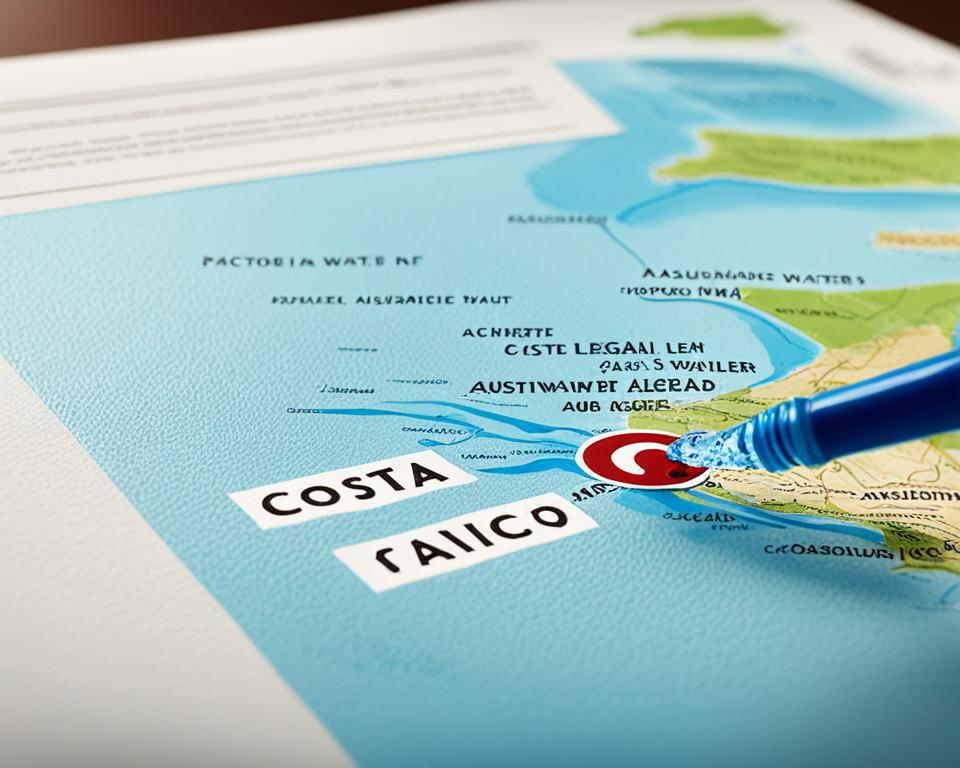
Everything You Need to Know About Water Letters In Costa Rica
Obtaining a Water Letter
Getting a water letter in Costa Rica is key if you want to build on a land. It’s needed to get a construction permit. You apply to the AyA or your local ASADA, based on where your land is. They check if there’s enough clean water for what you want to build.
Validity Period and Renewal Process
Water letters in Costa Rica last from 6 to 12 months before you need to get a new one. You have to keep renewing it to keep building.
To renew, you send in a new application with updated info. Always plan to renew before it expires to keep your construction going without problems.
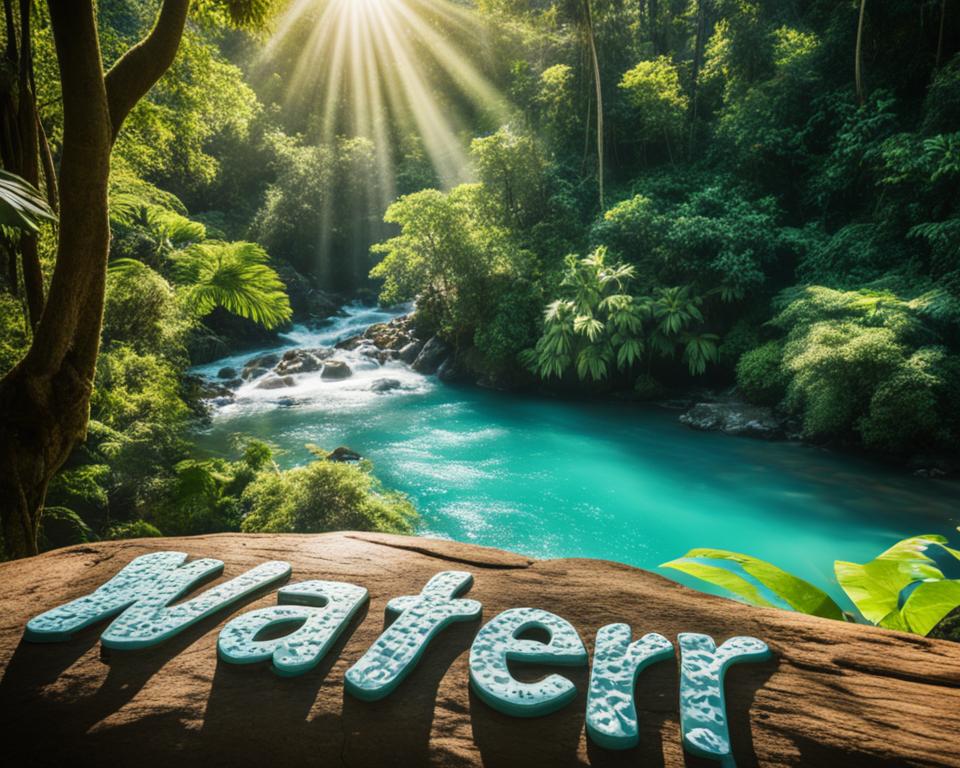
Water Letters in Gated Communities
In Costa Rica, gated communities have special rules about water. This makes things more complicated for homeowners. It’s important to know how water is managed here. Understanding water rules ensures building happens smoothly and water stays sustainable.
Community Water Systems
Many gated communities in Costa Rica have their own water systems. They are overseen by ASADA associations. These groups provide clean water to community residents. They are key in getting water letters for new builds.
The ASADA and national authority AyA work together. They make sure water systems and quality are up to scratch. Homeowners need a water letter from their ASADA. This letter proves there’s enough water for their property.
Connecting to Local ASADAs
Getting connected to an ASADA water system and getting a water letter can be hard. Homeowners must learn the Costa Rican water regulations. They should also understand their ASADA’s rules.
ASADAs might have limits on new connections or water use. Homeowners need to follow all rules. They must get the water letter before starting any building projects.
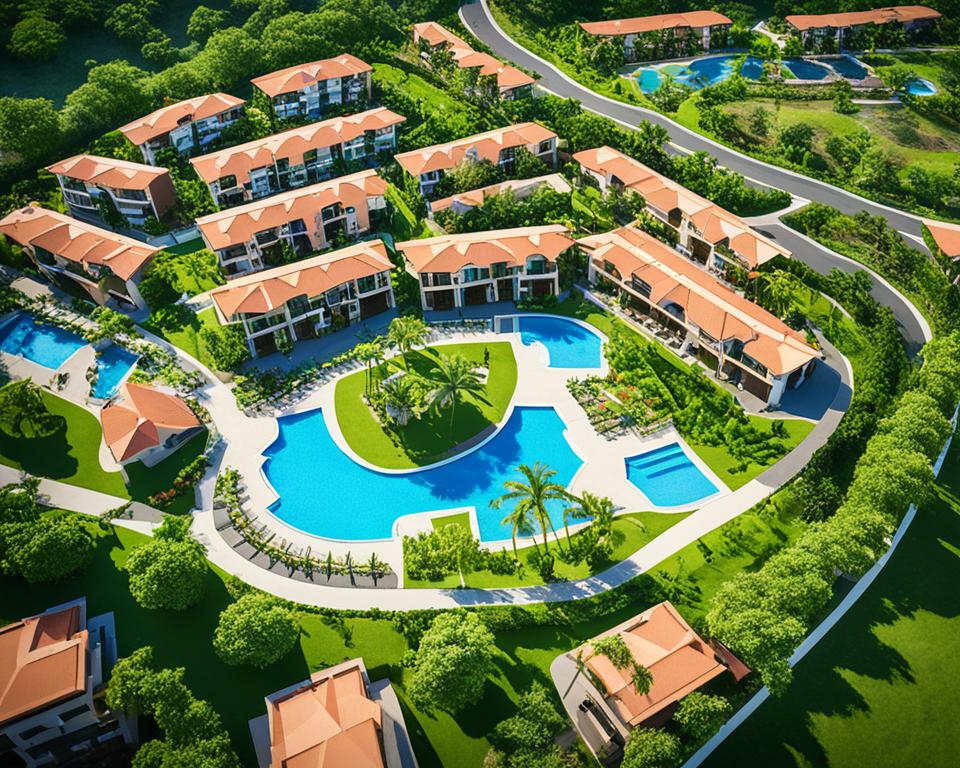
Alternative Water Sources
If getting a water letter is hard, we can look at other water sources in Costa Rica. Each choice has its obstacles. Let’s check out what property owners can do.
Utilizing Springs, Streams, or Rivers
One way is to use natural water like springs, streams, or rivers on the land. But, getting the permit to use these alternative water sources might be tough. This is especially true in Guanacaste, where there’s not enough water.
Digging Wells
Digging a well is another choice. You can do it by hand or with tools, depending on how deep the water is. But, getting the permit for a well can take 6 months to 1.5 years. Plus, it can cost from US$6,000 for a small well to much more for a big one.
Rainwater Harvesting
Collecting rainwater is a good option in Costa Rica. Homeowners can use a system to gather and save rainwater. But, even with this system, you might need a water letter to get a building permit. Officials might not see it as a main water source.
In places like Guanacaste, getting a permit for these water sources can be hard. This is because there’s a big lack of water. In such areas, joining a local water association might be the best way. This can help in getting the needed permits and a water letter.
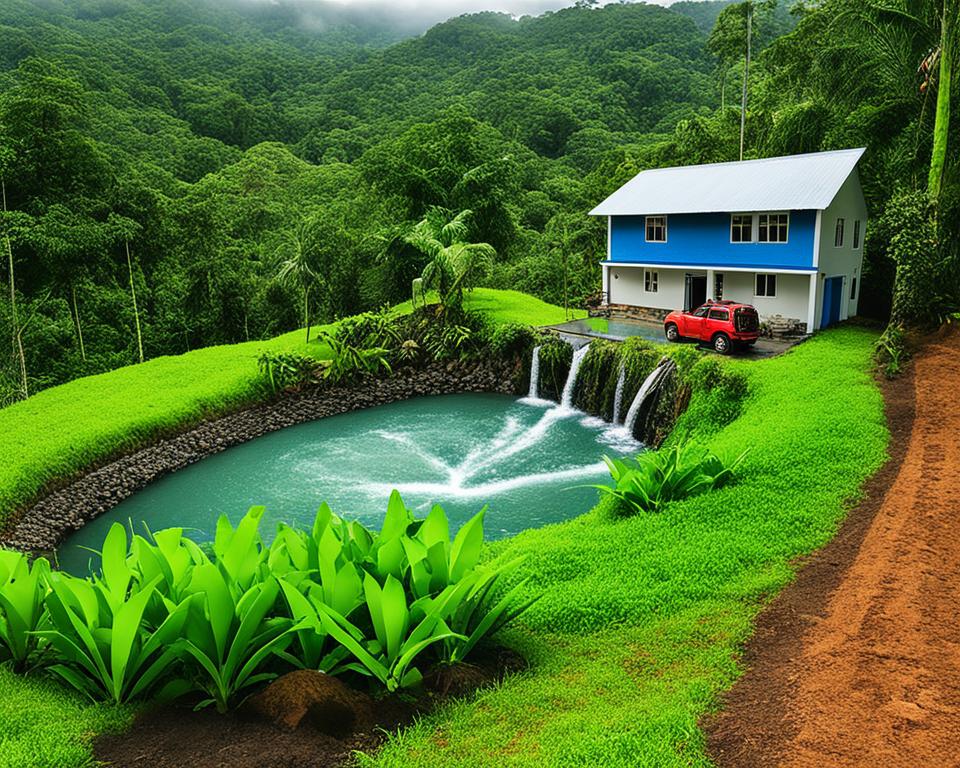
Conclusion
Getting a water letter is vital for those planning to build in Costa Rica. These documents come from the AyA or local ASADAs. They show if potable water is available for a particular area. Without one, you can’t get a building permit. Knowing about water letters is key to a smooth investment in Costa Rica.
The Costa Rican government takes water management seriously. It focuses on sustainability and protecting the environment. Anyone wanting to build there should learn about water rights and the local rules. This ensures their project supports Costa Rica’s water protection goals.
There are other water sources, like springs, rivers, and wells. Property owners have these options. But, using them has challenges and specific rules to follow.
Knowing about water letters is key if you plan to invest in Costa Rica. By being informed, investors can choose wisely. They’ll help conserve water and boost Costa Rica’s appeal for tourists and real estate buyers.
FAQ
What is a water letter in Costa Rica?
A water letter, known as a “carta de agua” in Costa Rica, confirms potable water availability for a property. It’s crucial for getting a building permit there.
Why are water letters important in Costa Rica?
For building in Costa Rica, one must have a water letter. It shows the property has enough safe water. Without it, one can’t get a construction permit.
Who issues water letters in Costa Rica?
In Costa Rica, AyA or local ASADA groups issue water letters. AyA is the national water and sewer service. ASADAs are local water management associations.
How do I obtain a water letter in Costa Rica?
Applying to AyA or your area’s ASADA is how you get a water letter. The process varies by location and what each organization specifically requires for the property.
What happens if I can’t get a water letter for my property in Costa Rica?
If you can’t get a water letter, you have to find other water sources. This can be from springs, rivers, wells, or rainwater systems. Yet, this can be challenging and may require different permits.
Do water letters have a validity period in Costa Rica?
Water letters in Costa Rica do expire and need renewal. The renewal process and its timeframe depend on where you got the water letter. Always check for details to keep your water letter current.
How do water letters work for properties in gated communities in Costa Rica?
In Costa Rica, even gated communities need water letters. They might rely on community water or connect to ASADAs. The rules can change depending on the specific community.
What are some of the challenges associated with water letters in Costa Rica?
Challenges in getting a water letter include finding enough water and dealing with red tape or water ownership disputes. The process can vary by region and who you apply with, making it more complicated.
Source Links
- https://www.remax-oceansurf-cr.com/water-letter-when-buying-a-lot
- https://www.gapequityloans.com/en/water-letters-in-costa-rica/
- https://www.happierthanabillionaire.com/2021/03/29/we-have-a-water-letter-now-what-to-build-hold-or-sell-in-costa-rica/
- https://www.gapequityloans.com/en/construction-loans/
- https://www.gapequityloans.com/en/costa-rica-home-equity-loans/
- https://gapinvestments.com/en/secure-loans-in-costa-rica/
- https://www.gapequityloans.com/en/water-letter-costa-rica/
- https://www.gapequityloans.com/en/equity-loans-faq/
- https://osatropicalproperties.com/blog/how-to-get-a-water-concession-in-costa-rica
- https://www.gaprealestate.com/water-letter-construction-requirement-costa-rica/
- https://www.gapequityloans.com/en/costa-rica-home-equity-loans-guide/
Article by Glenn Tellier (Founder of CRIE and Grupo Gap)



